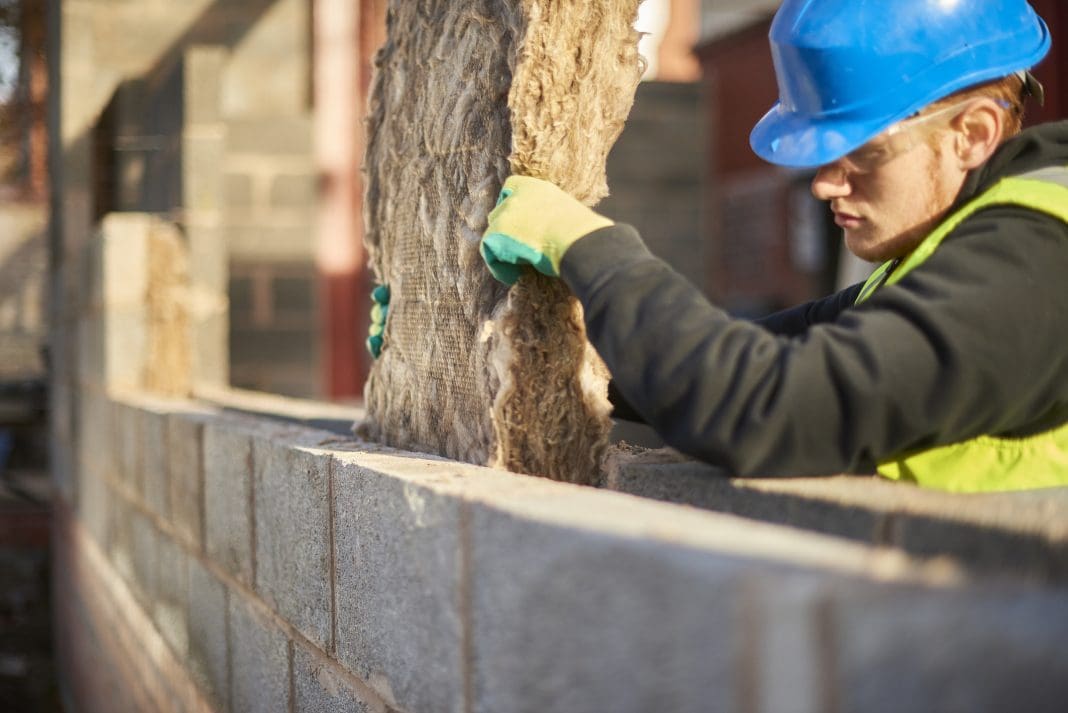Andy Merrin, innovation and decarbonisation director at United Living Property Services, explores the next steps needed to deliver energy efficient housing for the UK
The construction and housing sectors are firmly behind the UK government in its commitment to reduce greenhouse gas emissions to net zero by 2050. New homes are being designed and built to be net zero compatible, with appropriate energy efficiency measures.
Nevertheless, it is estimated that even by 2050, 80% of the homes are already
standing, having been built when carbon emissions were not considered a priority.
Consequently, more than half of currently available homes have an energy efficiency rating of EPC D or less. This means the real test of our commitment will be whether we can improve the energy efficiency of existing homes.
Put bluntly, we need to decarbonise 27m homes in less than 30 years, which will need a substantial investment in mass-scale renovations to retrofit older homes.
The first obstacle is that we lack the technology and know-how to do this on the scale required. We need to be retrofitting hundreds of thousands of homes per year across the industry, which far exceeds current levels.
The second obstacle is that once we have solutions that work at scale, we need to figure out how to pay for them – and, again, on a massive scale. The good news is that we have the beginnings of a solution on both counts.
There is an energy efficient housing model that works…
The innovative Dutch movement of ‘Energiesprong’ – (Energy Leap) involving a partnership between housing associations and industry – has delivered thousands of net-zero energy refurbishments in the Netherlands, with tens of thousands more in the pipeline.
The UK industry has taken inspiration from this success, setting up Energiesprong UK to drive forward the movement here. A series of pilot projects have been delivered in the social housing sector, and solutions, tools, processes and delivery routes are in place for scaling these up.
The Energiesprong model is about technical innovation at scale. The partnership element means new solutions can be tested and quickly taken up by others. There is a constant emphasis on bringing costs down so these solutions can be implemented on the necessary scale. Key elements of this innovation include offsite construction and creative methods of installation. These certainly lend themselves to the major challenges we face in the UK.
For example, a significant proportion of British homes built between 1919 and 1930 have uninsulated solid walls, which account for almost half of heat loss. And while current methods of external wall insulation are time and labour intensive, mass producing energy efficient walls offsite will mean they can be installed more quickly and economically. This and other ‘modern methods of construction’ have great promise in terms of scaling up our retrofit programme nationally.
If we are to make a success of Energiesprong in the UK, we will need to share best practices across the industry, including with competitors as well as peers. This will enable the industry as a whole to demonstrate retrofit’s ability to deliver long-term, quality solutions, and help raise the overall level of professional standards in order to roll them out at scale.
A key element of Energiesprong is performance verification, which enables its ‘comfort plans’. These ‘comfort plans’ provide 10-30 year-long guarantees on the thermal performance of retrofitted properties, as well as reduced energy usage and a minimum proportion of renewable energy.
The cost of a higher performance retrofit is then paid for using a proportion of the savings over the long term. We will need to utilise forward-looking investment if we are to make Energiesprong work in the UK.
Large-scale investment is required to fulfil Energiesprong’s potential
The burgeoning retrofit market will require significant investment to deliver at scale and drive further innovation, creating a virtuous circle of investment and innovation.
A key role will be played by the Social Housing Decarbonisation Fund (SHFD) due to the scale it offers. The SHDF, ECO4 and Home Upgrade Grant are collectively worth over £8bn to 2030 and will be used to fund energy-saving measures ranging from loft insulation to renewable heating systems. Additional match funding from housing providers will bring the total investment closer to £16bn to upgrade social and private homes in England.
However, further private investment is still required on a major scale, and it is not clear where that will come from.
One option could be the UK Infrastructure Bank (UKIB), which is committed to providing £22bn of infrastructure finance to tackle climate change and support regional and local economic growth across the country. The scale of potential investment from UKIB and others could introduce much-needed support for suppliers to invest in their innovations to reduce cost and deliver at scale.
Collaboration will be key to meeting net zero targets
What is becoming increasingly apparent is the only way we will find solutions is through greater collaboration. The National Home Decarbonisation Group (NHDG), of which United Living is a founding member, has been created for exactly this reason.
Its mission is to collectively deliver high-quality energy efficiency measures and low-carbon technologies at scale across the UK’s housing stock. It will do this through developing a collaborative platform of the country’s leading contractors and residential retrofit specialists to focus on three core areas critical to achieving the government’s ambitious targets for the sector; growing the retrofit supply chain, advising on policy and stimulating innovation.
So, the challenge ahead is daunting, but we are already seeing greater collaboration and progress in the technical and financial innovations we need to meet it. Now, we need to build momentum in order to deliver energy efficient housing- and a sustainable future.
Andy Merrin

Innovation and decarbonisation director
United Living Property Services

















